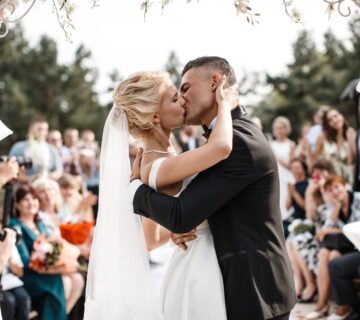Start a kiss can feel as daunting as it is thrilling—a tangled blend of nerves, excitement, and hope. Whether you’re waiting for that unforgettable first kiss or hoping to set the right mood for a romantic moment, learning how to start a kiss is about confidence, mutual comfort, and timing.
Why Starting the Kiss Matters
The way you initiate a kiss can set the tone for your relationship, signal your intentions, and transform an ordinary moment into something truly magnetic. Getting that moment right taps into communication, chemistry, and consent all at once. Remember, it’s not about scripted moves but about building an authentic connection where a kiss feels natural, wanted, and meaningful.
Essential Preparation: Setting the Stage
Hygiene and Self-Care
-
Fresh Breath: Brush your teeth beforehand, keep breath mints handy, and avoid strong-smelling foods or drinks before a date.
-
Soft Lips: Use lip balm if needed and avoid chapped lips for a more pleasant experience.
-
Personal Presentation: Wear what makes you feel confident and comfortable.
The Right Environment
-
Choose a Calm, Private Setting: Busy or public spaces can add awkwardness. Seek a private or semi-private spot where you both feel at ease and present.
-
Set the Mood: A relaxed conversation, lingering eye contact, gentle touches, or even sharing a funny moment can make the transition to a kiss feel natural.
Reading the Signs: Are They Ready?
-
Eye Contact: If the other person gives you sustained, soft eye contact—especially if they glance at your lips—that’s often a good sign.
-
Physical Closeness: Leaning in, touching your arm or hand, or mirroring your movements usually signals interest.
-
Smiling and Laughing: Positive, open body language suggests comfort and affection.
-
Verbal Check-In: When in doubt (or just to be romantic), simply ask: “Can I kiss you?” or “I’d like to kiss you now, if that’s okay.” Far from ruining the mood, this can make your partner feel respected and adored.
How to Start a Kiss: Step-by-Step Guide
1. Build Connection Through Body Language
-
Move a little closer during conversation. Subtlety is key: reduce the distance between you, turn your body toward them, and initiate gentle touch—hold their hand or lightly touch their arm.
-
Smile and maintain relaxed eye contact; brief glances at their lips also communicate your intentions authentically.
2. Close the Distance Slowly
-
Lean in at a leisurely pace, giving your partner a chance to lean in too or gently pull away if they’re not ready.
-
Tilt your head ever so slightly; most people automatically tilt right to avoid bumping noses.
-
Be mindful of your partner’s reactions—reciprocation means it’s the right moment, but hesitation means it’s okay to pause.
3. Pause and Connect
-
A moment of near-touch heightens anticipation. Pause when you’re close enough to feel each other’s breath.
-
If you’re still unsure, softly say something like, “I really want to kiss you,” or “Can I kiss you?”.
4. Initiate the Kiss Softly
-
Start with a gentle, closed-mouth kiss—no grand gestures needed. Let your lips meet theirs lightly, and avoid intense pressure.
-
Keep your mouth relaxed and breathe calmly through your nose.
-
Use your hands thoughtfully: cup their face, gently touch their hair, or rest on their shoulder or waist—whichever feels natural and comfortable.
5. Let the Moment Unfold Naturally
-
Don’t rush; let the kiss flow according to the mood. What matters is mutual enjoyment and connection.
-
If the kiss continues, adjust pressure gently, respond to your partner’s cues, and perhaps (if both feel ready) deepen the kiss. But for the start, soft and slow is usually best.
6. React and Communicate
-
After the kiss, smile and whisper something affectionate if you feel comfortable.
-
If your partner pulls back or doesn’t seem ready, be gracious—smile, thank them for sharing the moment, and relieve any pressure.
Common Mistakes to Avoid When Starting a Kiss
-
Being too forceful or sudden: Kissing is about mutual anticipation, not surprise. Go slow.
-
Skipping consent: If you guess wrong about readiness, pausing to ask is never a mistake.
-
Bad breath or chapped lips: Take care of oral hygiene and lip health.
-
Ignoring body language: If your partner seems tense, distracted, or pulled back, check in verbally rather than pushing forward.
Tips for Different Scenarios
For Shy or Nervous Starters
-
Practice by imagining how you’d like to ask—find words that feel natural to you.
-
If you’re feeling nervous, tell your partner; vulnerability can be very attractive and can relieve pressure for both.
When Reading Signals is Difficult
-
Combine verbal consent (“Can I kiss you?”) with gentle body language.
-
Focus on creating comfortable, pressure-free moments.
For Established Relationships
-
Starting a kiss remains important. Surprise your partner with a spontaneous peck or set the mood for romance with playful eye contact before kissing.
Read More: First Time Kiss Tips: How to Give a Memorable, Romantic First Kiss
Final Thoughts
Starting a kiss is as much about feeling as it is about method. There’s no rigid formula—only a need for empathy, confidence, and trust. Read your partner’s cues, prioritize comfort and consent, and let the moment build naturally. With these tips, your next kiss—whether your first or hundredth—can be the start of something truly unforgettable.








[…] Read More: How to Start a Kiss: A Complete Guide to Initiating the Perfect Romantic Kiss […]